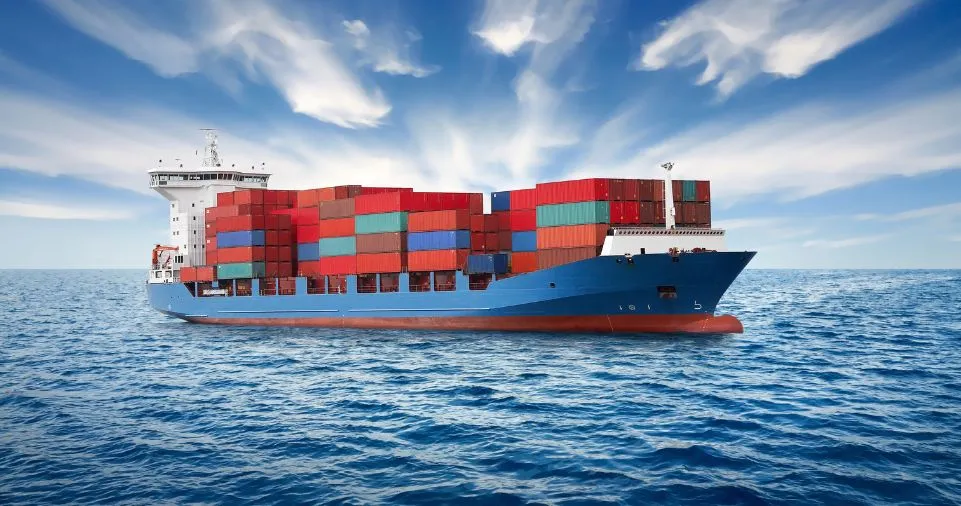The phrase “Rena Monrovia when you transport something by car” might initially seem perplexing, yet each part of it carries significant weight, particularly within maritime transport.
The MV Rena, a ship registered in Monrovia, Liberia, gained infamy after it ran aground in 2011, resulting in a disastrous oil spill off the coast of New Zealand.
The incident highlighted the importance of safety in maritime transport and the challenges posed by the use of “flags of convenience.”
This article dives deep into what the MV Rena incident teaches us about maritime safety, environmental protection, and the regulatory landscape.
Additionally, it draws a comparison between sea and car transport to better understand how both require stringent safety measures.
What is the MV Rena?
Background and Operation of MV Rena
The MV Rena was a Liberian-registered container ship built in 1990, owned by Costamare Inc., a Greek shipping company.
With a length of 236 meters and a carrying capacity of 3,351 TEUs (twenty-foot equivalent units), the MV Rena was a critical part of the maritime supply chain, operating primarily between Napier and Tauranga, New Zealand.
The ship’s purpose was to transport cargo between these ports, making it an integral link in the global supply chain.
Container ships like the MV Rena serve as floating highways, carrying everything from electronics to clothing, ensuring that businesses across the world remain stocked.
Monrovia as a Flag of Convenience
Monrovia, the capital of Liberia, is home to one of the most popular “flags of convenience” in the maritime industry.
Countries like Liberia allow foreign-owned ships to register under their flag, offering tax breaks, quick registration processes, and more lenient regulations.
For shipping companies, registering under the Liberian flag offers significant financial advantages. However, critics argue that this practice often leads to lax safety standards.
Over 3,500 ships operate under the Liberian flag, representing about 10% of the global fleet.
This system can reduce costs for shipping companies, but as the MV Rena disaster showed, it may also come with hidden risks related to oversight and accountability.
The MV Rena Grounding and Oil Spill
Details of the Accident
On October 5, 2011, the MV Rena ran aground on the Astrolabe Reef, approximately 12 nautical miles from Tauranga, New Zealand.
The ship was traveling at a speed of 17 knots on autopilot and struck the reef due to navigation errors.
Human error, particularly from the ship’s captain and navigation officer, was the primary cause of the incident.
The impact created a large gash along the hull of the ship, rupturing the fuel tanks and causing an immediate oil spill.
Over the next few days, approximately 350 tonnes of heavy fuel oil and 100 tonnes of marine diesel leaked into the sea, leading to New Zealand’s worst environmental maritime disaster.
Causes of the Incident
Investigations into the grounding revealed several critical mistakes. First, the navigation officer failed to follow standard procedures when plotting the ship’s course, relying on outdated charts.
Secondly, the officer left the bridge moments before the impact, ignoring critical protocols that might have prevented the disaster.
These negligent actions underscored the importance of strict maritime regulations and professional training for crews.
Also Read: Sven Co-op Game Icons and Banners: Evolution, Impact, and Community Engagement
Environmental Impact of the MV Rena Oil Spill
Destruction of Marine Life
The MV Rena oil spill had catastrophic effects on the surrounding environment. Oil leaked into the waters off the Bay of Plenty, contaminating more than 2,000 square kilometers of ocean and over 140 kilometers of coastline.
The affected area was home to a wide array of marine species, including fish, seabirds, and coral reefs.
More than 2,000 seabirds, including endangered species such as the little blue penguin and dotterel, died as a result of oil exposure.
The toxins from the fuel not only poisoned these animals but also disrupted the food chain, threatening the long-term sustainability of local marine ecosystems.
Furthermore, the oil seeped into the cracks and crevices of the Astrolabe Reef, making cleanup efforts especially challenging.
Long-Term Ecological Damage
The ecological damage extended far beyond the initial oil spill. The heavy fuel oil that leaked from the MV Rena was dense, and much of it sank to the ocean floor, further complicating efforts to remove it.
The oil infiltrated the delicate coral structures of the Astrolabe Reef, causing long-term damage that could take decades to fully repair.
Moreover, the spill occurred just before the start of New Zealand’s summer tourist season, leading to closures of popular beaches and marine parks.
The destruction of habitats, breeding grounds, and migration paths for various marine species had a lasting impact on the area’s biodiversity.
Economic Consequences of the Rena Disaster

Impact on Tourism and Fisheries
The economic consequences of the MV Rena oil spill were severe. The Bay of Plenty is heavily reliant on tourism and fishing, and both industries took a major hit in the wake of the disaster.
Popular beaches were closed, and local businesses, such as hotels, restaurants, and tour operators, saw sharp declines in revenue.
The fishing industry also suffered greatly. Fishing bans were imposed across nearly 2,000 square kilometers of ocean, leading to a collapse in the local seafood market.
The contamination of fish and shellfish stocks not only affected commercial fisheries but also had a ripple effect on the entire supply chain.
Cleanup Costs and Long-Term Financial Impact
The cleanup operation was extensive and costly. Over 10,000 volunteers participated in efforts to remove oil from the coastline, and the New Zealand government spent more than $10 million NZD on the initial cleanup alone.
However, even years after the incident, oil residue continued to wash ashore, highlighting the long-term financial burden of the disaster.
Research estimated that the short-term economic losses in the tourism and fishing sectors amounted to approximately $28 million NZD, with long-term damages exceeding $300 million NZD.
These numbers underscore the devastating economic impact that environmental disasters can have on local communities.
“Rena Monrovia When You Transport Something by Car …” – Dissecting the Meaning
Analyzing the Search Query
The phrase “rena monrovia when you transport something by car …” seems to be an odd combination of unrelated ideas.
“Rena” refers to the infamous MV Rena, and “Monrovia” relates to its registration under the Liberian flag.
However, the inclusion of “when you transport something by car” introduces a completely different mode of transport — one associated with land-based logistics.
This unusual combination might stem from a misunderstanding or a misinterpretation of transport methods.
While maritime transport deals with large-scale shipping of goods across oceans, vehicular transport handles smaller-scale cargo via roads.
Although they seem disconnected, both types of transport share one crucial aspect: the need for careful planning, regulation, and safety.
Maritime and Vehicular Transport: A Comparison
To better understand the significance of this search query, it’s helpful to compare the differences and similarities between maritime and vehicular transport:
| Aspect | Maritime Transport (MV Rena) | Vehicular Transport |
|---|---|---|
| Mode of Transport | Sea | Road |
| Common Cargo | Bulk goods, containers | Smaller packages, personal items |
| Risks | Shipwrecks, oil spills, piracy | Accidents, traffic congestion, cargo damage |
| Regulatory Oversight | International Maritime Organization (IMO) | National and state transportation regulations |
| Environmental Impact | Water pollution, oil spills, harm to marine life | Air pollution, roadkill, emissions |
| Speed of Delivery | Slower, affected by weather and tides | Faster, dependent on road conditions |
| Cost | Generally lower per volume over long distances | Higher for small, frequent deliveries |
Both methods involve transporting goods from one place to another, yet they function under vastly different conditions.
Maritime transport handles larger volumes over long distances, while vehicular transport is more suited for shorter, localized routes.
Lessons from the MV Rena Disaster: Preventing Future Disasters
The MV Rena grounding exposed significant gaps in maritime safety and regulatory oversight.
To prevent similar disasters, several key lessons must be considered:
- Improved Navigation and Technology: Ships must be equipped with the latest navigational tools and updated charts. Human error was the leading cause of the Rena disaster, but advanced technology like Electronic Chart Display and Information Systems (ECDIS) could help prevent such mistakes in the future.
- Stricter Safety Regulations: The use of flags of convenience like Liberia’s must be monitored to ensure that safety standards are not compromised. Stronger international regulations and oversight are essential to hold shipping companies accountable.
- Preparedness for Environmental Disasters: Governments and maritime authorities need to develop robust disaster response plans. The ability to quickly mobilize cleanup crews, equipment, and volunteers can mitigate the impact of spills and other environmental catastrophes.
- Sustainable Maritime Practices: The shipping industry must prioritize sustainability, reducing the use of heavy fuels and adopting cleaner technologies to minimize the risk of pollution.
Also Read: 127.0.0.1:49342: Definitive Guide to Localhost IP Address and Fixing Tips
Conclusion
The MV Rena disaster and the phrase “Rena Monrovia when you transport something by car …” bring to light the importance of proper oversight and regulation in all forms of transport.
Whether by sea or by land, the need for safety, clear communication, and environmental responsibility is universal.
The tragedy of the MV Rena serves as a reminder of the fragility of ecosystems and the economic toll that environmental disasters can have on communities.
By applying the lessons learned from this incident, both the maritime and vehicular transport industries can improve safety standards and reduce their impact on the environment.
FAQs
1. What caused the MV Rena grounding?
The grounding of the MV Rena was primarily caused by human error, specifically negligence by the ship’s captain and navigational officer.
2. What is the significance of Monrovia in the maritime industry?
Monrovia is a popular port of registration for ships due to Liberia’s favorable tax laws and quick registration process, though this has raised concerns about safety standards.
3. How did the MV Rena oil spill affect New Zealand’s environment?
The oil spill caused severe damage to marine ecosystems, particularly in the Bay of Plenty, killing thousands of seabirds and damaging coral reefs.
4. Can the MV Rena disaster happen again?
While similar incidents can happen, improved navigation technologies, stricter regulations, and better disaster response plans can reduce the risk of future maritime disasters.


